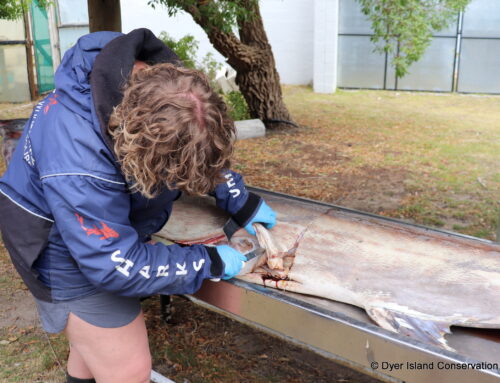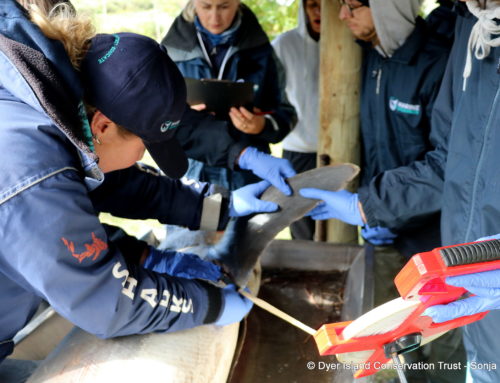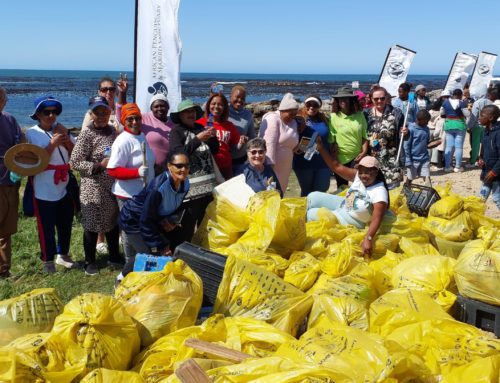RISSO DOLPHIN STRANDED AT DANGER POINT
September 21, 2009 by dyertrust

“The dolphin was a Rissos dolphin, Grampus griseus. It was a mature female and was not pregnant or lactating. It was very thin and only had two teeth in the lower jaw. Besides for a superficial wound forward of the dorsal fin, there was nothing obviously wrong with it, and it probably died of old age.
The largest stranded male from the southern African subregion measured 3.41m, the largest female was 3.18m, while this one measured 3.17m.
The skull is currently being processed at the IZIKO South African Museum, and will be added to their marine mammal collection. The stomach and reproductive samples were collected, to be examined at the later date. A skin sample was taken and is being retained for DNA and fungal analysis.
This species is found worldwide, in tropical and temperate regions. They are found close to the edge of the continental shelf, in water between 350-1500m, and in pelagic (open waters). They feed primarily on cephalopods.
Rissos are unusual looking animals. They are easy to identify in comparison to other dolphins and are always lovely to see as they have beautiful colouration patterns and scarring all over their body. They have a blunt head and, a disproportionately large, erect dorsal fin.
They are brownish when born, initially darkening as they grow older (except for their whitish anchor mark on the ventral surface), then they start to lighten again, at the same time scarring prominently as a result of bites obtained during interactions with conspecifics (other animals of the same species) and other small delphinids (dolphins species).
They only have teeth in the lower jaw and these usually number between 2 and 6 pairs, and are situated towards the front of the jaw. These teeth become very worn and even fall out in the older animals, and some have been found with no teeth at all!
Rissos dolphins are not rare, but are seldom seen at sea and have been involved in 4 mass strandings in SA. There are no population estimates for this species and they are listed as Data Deficient by the IUCN.





